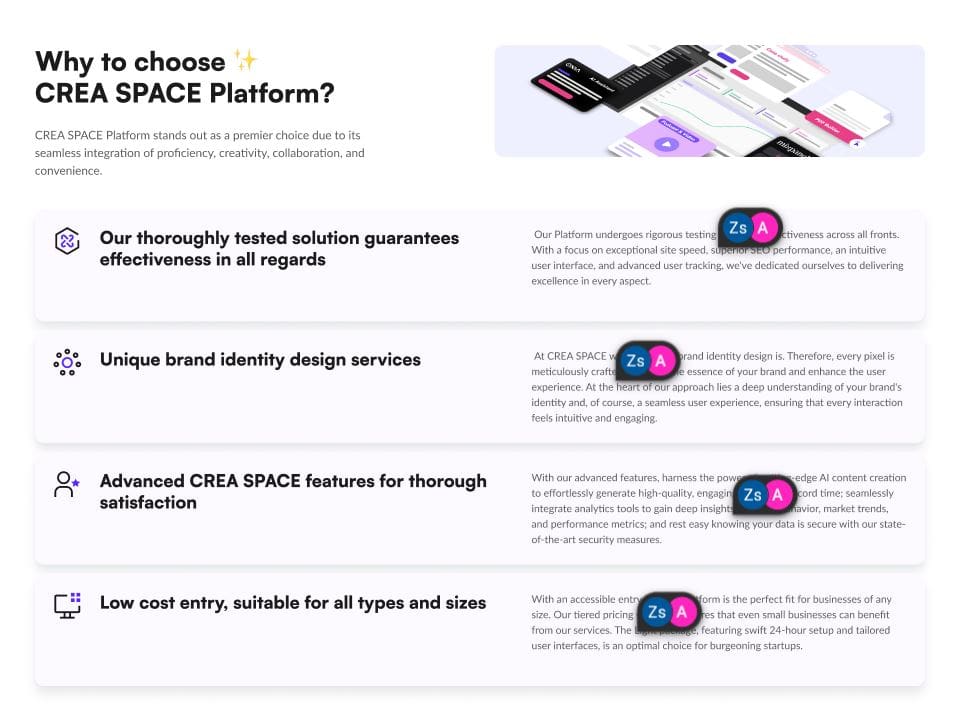In the labyrinth of software development, UX documentation emerges as the guiding light, illuminating the path towards user-centric design. But what exactly is UX writing documentation, and why is it crucial for the success of UX writing? Picture it as the blueprint of a skyscraper; without it, the construction might collapse into chaos. Good UX writing documentation is the cornerstone of effective communication and collaboration within teams. It not only outlines the design decisions but also serves as a roadmap for seamless user experiences. Let's delve into the requirements for top-notch UX writing documentation!
Requirements for superb UX writing documentation
When it comes to crafting exceptional user experiences, clarity and coherence in communication play an inevitable role. As such, UX writing documentation serves as the backbone for creating intuitive, seamless interactions within digital products. To ensure a superior user experience, it's imperative to establish comprehensive requirements for UX writing documentation. Accordingly, in the following paragraphs, we delve into the essential elements necessary to cultivate superb UX writing documentation. So, let's see the magical five!
It's all about efficiency
Efficiency isn't just a buzzword; it's the holy grail. Nobody has time to decipher convoluted documentation that's as confusing as a Rubik's cube in the dark. Your documentation should be concise, clear, and as straightforward as ordering your favorite pizza—no extra toppings of confusion, please!
Accessibility & shareability
When it comes to top-notch UX writing documentation, accessibility and shareability are the bread and butter. Like a viral meme, your documentation should be as easy to access as a click and even easier to share than cat videos on the internet. After all, sharing is caring, especially in the realm of the user experience, where collaboration is key.
UX writing documentation & adaptability
Adaptability is the name of the game. Just like a chameleon changes colors to blend into its surroundings, your UX documentation should adapt to the unique requirements of each project. It should be flexible enough to cater to different user needs and project specifications without breaking a sweat.
Translation-friendlyness
In our diverse world, where languages flow like rivers, your UX documentation should possess the linguistic prowess of a polyglot. It should be translation-friendly, allowing for seamless adaptation into various languages and ensuring that your message resonates with users across the globe. Did you know that 72.4% of consumers are more likely to buy a product if the information is available in their native language? That's a stat worth considering!
The librarian's smile: UX writing documentation & humour
Remember, the goal is not just to inform but to engage and delight. So, sprinkle in some light-hearted humor, toss in a few witty puns, and watch as your documentation becomes the star of the show. After all, who said documentation couldn't be fun?
Preparations for UX writing documentation
Have you ever wondered what the most crucial steps are to starting UX writing documentation? In essence, regardless of the project's nature, robust preparation maximizes efficiency, minimizes risks, and paves the way for achieving desired outcomes. This pivotal section guides you through the four initial and obligatory stages of documenting your UX writing strategy.
The project's trajectory
Picture yourself as the intrepid explorer, unraveling the mysteries of a long-forgotten map. Understanding the project roadmap is your compass, guiding you through the twists and turns of client requirements. Dive deep into the intricacies of timelines, milestones, and deliverables to chart a course for success. According to recent studies, high-performing organizations with well-defined roadmaps have met their original goals 2.5 times more often.
Knowing your stakeholders
Ah, the stakeholders! They're your companions on this daring voyage. Just like a savvy host at a grand soirée, you must cater to their every whim and fancy to keep the ship sailing smoothly. Get to know each stakeholder's preferences, concerns, and expectations to ensure a harmonious journey. After all, a happy stakeholder is like a favorable wind, propelling your project toward success.
Tools of the trade
Like a wizard choosing their wand, you must select the perfect instrument to work your magic. Whether it's a sleek writing tool or a trusty old notebook, your choice sets the stage for greatness. Explore the vast array of tools available, from user-friendly platforms to cutting-edge software, and find the one that best suits your needs. Remember, the right tool can enhance your productivity and unleash your creativity like never before. Wait! If you're about to do some online research regarding the tools just mentioned, relax; you're going to encounter an introduction to one specific tool under the section called "Automated documentation." So, just stay calm!
UX writing documentation needs testing your audience
As you sail through the turbulent waters of documentation, don't forget to test your creations with your audience. Think of it as fine-tuning a smartphone interface—every tap and swipe should feel as smooth as silk. Solicit feedback from stakeholders, conduct user testing sessions, and iterate on your designs until they shine like polished gems. Remember, the true measure of success lies in how well your documentation resonates with its intended audience.
The Tryptych of UX writing documentation
In UX writing documentation, there are three fundamental types of documentation that shape how user experiences are crafted and communicated: integrated documentation, automated documentation, and personalized documentation. Each type offers unique advantages and approaches to ensure clarity, consistency, and effectiveness in conveying the message of digital products. At CREA SPACE, we embrace a dynamic approach to UX writing documentation, primarily focusing on integrated and personalized methods. While we acknowledge the importance of automated documentation, which streamlines repetitive tasks and enhances consistency, we find that integrated and personalized approaches resonate most strongly with our ethos of crafting meaningful user experiences.
Integrated documentation
Integrated, or so-called "in-design documentation," is like a hidden treasure within the design itself, revealing the rationale behind every element. During, for example, a Figma Jam session, light can be shed on the valuable insights of the designer's thought processes and intentions. In addition to textual annotations, we can utilize Figma's comment feature to facilitate discussions and gather feedback directly within the design canvas. This allows team members to express their thoughts, ask questions, and propose alternative solutions seamlessly. Incorporating integrated writing documentation can reduce misinterpretation and streamline collaboration among team members.

Automated documentation
Imagine having a Swiss Army knife for documentation—that's Atlassian Confluence for you. With its versatile features, Confluence simplifies the documentation process, making collaboration effortless and knowledge sharing seamless. The platform fosters collaboration by providing tools for real-time editing, commenting, and feedback, enabling team members to work together on documents irrespective of their physical locations. This collaborative environment promotes synergy and enhances team communication, leading to improved productivity and efficiency. It's not just a tool; it's a game-changer. Moreover, Confluence offers integration with other Atlassian products, such as Jira, Bitbucket, and Trello, enhancing its utility and interoperability within the Atlassian ecosystem. This integration allows for seamless project management, issue tracking, and code repository management, further streamlining workflows and enhancing productivity.
Personalized documentation
For those who like to break free from the conventional mold, personalized or custom-made documentation offers boundless possibilities. One of the key benefits of custom-made documentation is its ability to accommodate the diverse and evolving needs of modern businesses and projects. By allowing teams to create specialized templates, style guides, and workflows, custom documentation solutions can streamline communication, improve collaboration, and enhance overall efficiency. Furthermore, custom-made documentation enables organizations to integrate proprietary systems, tools, and processes directly into their documentation workflows. This integration can help automate repetitive tasks, reduce manual errors, and ensure consistency across documentation outputs.

UX writing documentation: golden rules
Yes, we've already written about the requirements for superb UX writing, but now it's about the golden rules. While requirements specify the particular criteria or features that must be met in a project or product, golden rules provide overarching principles and guidelines for achieving success within a particular context or domain. So, in the following sections, you're about to read about those golden rules that are essential for successful UX writing documentation. Collaborative engagement, ever-evolving human knowledge, iterative process reflections, continuity, and, surprising as it may seem, relaxation are crucial when it comes to favourable results. So whenever you create UX writing documentation in the future, pay attention to these rules and tick them off to see if they are met.
Collaborative engagement
What did we write about the stakeholders in the section about preparations? When stakeholders are involved early and continuously throughout the documentation process, a myriad of benefits emerge. Firstly, by involving stakeholders from the outset, their perspectives, insights, and requirements are seamlessly woven into the documentation, enriching its depth and relevance. This early involvement also ensures alignment with the overarching goals and objectives of the project, fostering a cohesive approach from inception. Moreover, frequent engagement with stakeholders facilitates ongoing feedback and iteration. As the documentation evolves, collaborative engagement contributes valuable insights, identifies gaps, and proposes improvements, ensuring its relevance and accuracy over the project lifecycle. This iterative approach maintains the documentation's comprehensiveness and adaptability to changing circumstances. Furthermore, involving other parties nurtures a sense of ownership and buy-in; they feel empowered to contribute meaningfully.
Ever-evolving knowledge
Although it is a cliché, learning really does last a lifetime. Technology is constantly evolving, introducing new platforms, devices, and interaction paradigms. This means that UX experts must modify their documentation approaches to take into account newly developed technology and guarantee the best possible user experiences in a variety of digital environments. User expectations are continuously changing, too, so to design intuitive and user-centric interfaces, UX pros must stay attuned to evolving user behaviors, preferences, and needs through ongoing research and learning. Continuous learning also allows UX specialists to get to know new industry standards and emerging best practices, ensuring that they can explore and adopt those new and workflow-improving tools and techniques that we mentioned in the section on preparations.
Iterative process reflections
So, in our fast-paced environments and processes, tools and best practices evolve quickly. Right? Without regular reviews, documentation swiftly becomes outdated, leading to confusion and inefficiencies among team members and misunderstandings, errors, and delays in product development. By conducting frequent iterative process reflections, teams can identify outdated information and ensure that documentation reflects current workflows and standards. Documentation must evolve to remain relevant. Maintaining relevance is key.
Continuity
Continuity in documentation, much like in a well-choreographed dance routine—well, not like in a postmodern ballet performance—is essential for creating harmony and clarity. When documentation maintains continuous, consistent design elements, language, and formatting across different sections or documents, it greatly enhances the user experience and comprehension. When users encounter this continuity, they can predict how things will work. For instance, if buttons consistently follow a certain style and are labeled in a similar manner, users can quickly understand their function without needing to relearn each instance. This familiarity reduces confusion and enhances seamless navigation. Continuity benefits users with disabilities, too. It improves accessibility by reducing barriers to comprehension and navigation for users who rely on assistive technologies. In addition, when users encounter a cohesive experience throughout an interface, they are more likely to perceive the product or service as trustworthy. This trust is essential for retaining users and fostering positive associations with the brand. Consistency in UX writing also helps reinforce the brand identity and scale the product.
Chill out!
"Chill out!" is a cordial reminder from our team at CREA SPACE to maintain composure and mindfulness when dealing with the inevitable chaos and complexity of UX writing documentation. Yes, we know, there's often a whirlwind of tasks, deadlines, and details to manage. UX writing documentation involves creating clear, concise, and user-friendly text, and this can be a demanding and challenging duty to be executed amidst the messes. In particular, "Chill out!" emphasizes the importance of taking a moment to breathe, both literally and metaphorically, amid busy and demanding situations. If you're a sceptic who needs scientific evidence of the benefits of relaxation, then check out this research conducted by the Wellness Institute at Cleveland Clinic, according to which meditation at work significantly reduces stress and boosts morale.
+ 1 more tiny pearl of wisdom: self-irony
Well, yes, this could be linked to our afore-mentioned section on relaxation, but we should dedicate a few sentences separately for the saviour of many uptight situations, self-irony. In the realm of UX writing documentation and in the overall field of UX writing, embracing the philosophy of celebrating mistakes can be a powerful mindset for writers and teams to adopt. By celebrating mistakes, UX writers can create a culture where experimentation and innovation are encouraged. Writers feel more comfortable taking risks and trying out new approaches—also in their documentation—knowing that mistakes are opportunities for growth and learning. In UX writing, documentation is rarely perfect on the first try. Embracing mistakes allows writers to view each iteration as an opportunity to refine and improve their content.
Conclusion
As we conclude our exploration into the realm of UX writing documentation, it's clear that we've encountered the tangled webs of complexity that often accompany the creation of user experiences. Yet, armed with wit, wisdom, and a touch of humor, we can navigate the challenges with resilience and creativity. As we reflect on our journey through the grand factory of UX documentation, we're reminded that the destination is not the sole measure of success. However corny it may be, it's the journey itself—the moments of inspiration, the challenges overcome, and the lessons learned—that define our experience and shape our impact on the world around us. So, gather the tools mentioned in this post and start the never-ending iteration! We wish you happy documentation!



